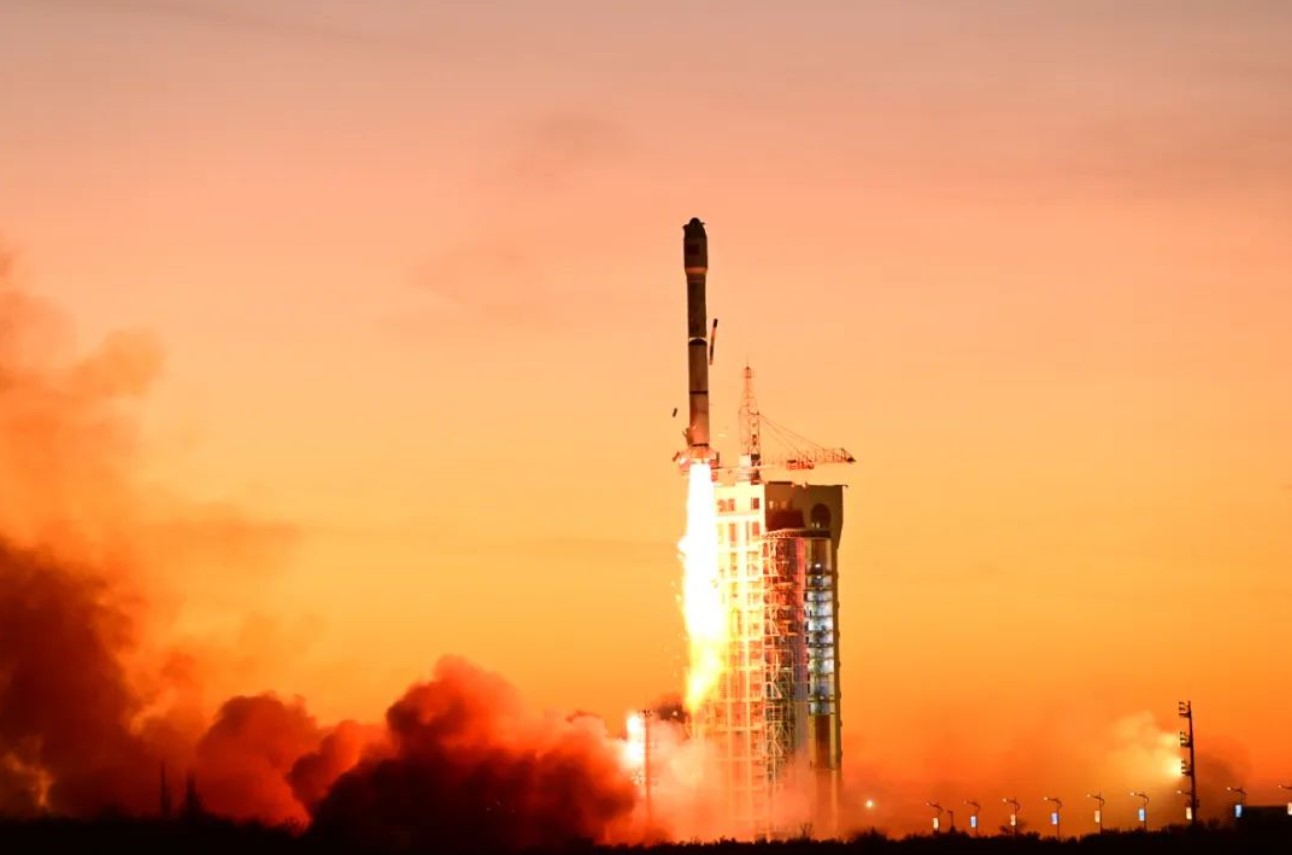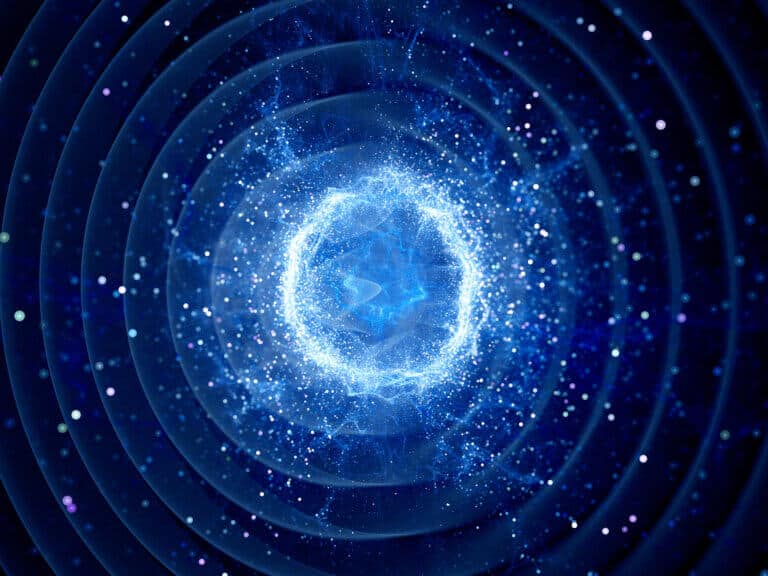
Teams in French Guiana positioned a European Ariane 5 rocket into its starting blocks Thursday, ready for liftoff Christmas morning with the nearly $10 billion James Webb Space Telescope, the most expensive science instrument ever to leave planet Earth.
The 180-foot-tall (54.8-meter) rocket rolled out of its final assembly building at the Guiana Space Center, towed by a diesel-powered Titan truck along dual rail tracks to the ELA-3 launch pad at the jungle spaceport.
Once at the pad, the rocket and its mobile platform were hooked into the facility’s power, propellant, and data systems in preparation for an overnight countdown set to begin Friday evening.
Arianespace, the launch operator for the Ariane 5 rocket, will oversee the countdown from two control centers at the spaceport. The Ariane 5 will be loaded with cryogenic liquid hydrogen and liquid oxygen propellants beginning shortly after 2:30 a.m. EST (0730 GMT) Saturday, culminating in final technical and weather checks before launch at 7:20 a.m. EST (1220 GMT).
Ariane 5 rockets have launched 111 times since 1996. After some early failures — the first Ariane 5 exploded less than a minute after liftoff — the European heavy-lifter has accomplished 96 successes in its last 97 missions.
Numerous commercial satellites have launched on Ariane 5 rockets. The European Space Agency’s BepiColombo mission on the way to Mercury, and the European Rosetta comet probe also left Earth on the top of Ariane 5 rockets.
Webb’s departure point at the Guiana Space Center is operated by CNES, French space agency. The spaceport — in use since 1968 — is carved from the edge of the Amazon rainforest in French Guiana, a French overseas territory the size of Ireland sandwiched between Suriname and Brazil.
The French government selected French Guiana for a spaceport location to replace the country’s first launch base in the Sahara Desert following Algerian independence.
The region is no stranger to spaceflight. More than 300 large rockets have launched from the Guiana Space Center.
“Webb is different because of the sheer size, because of the client,” said Charlotte Beskow, head of ESA’s operations at the Guiana Space Center, located on the tropical South American frontier. “Of course, it’s not every day that we have a major NASA-led product here at CSG,” she said, referring to the space center’s French acronym.
“It’s different in terms of the media attention we’re getting,” she said. “This is an important launch which has worldwide repercussions. It hopefully won’t effect the way we work. We always wors to the same high standard, but obviously there will be some emotional pressure on everybody.”
Crews a the spaceport are “putting their best efforts into this,” Beskow said. “We know it’s a unique observatory. It’s been 10 or 20 years in the making, thousands of people have worked on it, it’s hugely important, and we’re well aware of what’s at stake.”
The mission has a 32-minute launch window Saturday, and an opportunity to lift off at the same time Sunday, if problems keep the Ariane 5 on the ground Christmas morning.
The rocket’s core stage will light a hydrogen-fueled Vulcain 2 main engine seven seconds before liftoff. After a computer-controlled health check, the rocket will issue a command to light its twin solid rocket boosters, each with three segments of pre-packed powder propellant.
The launcher will race off the pad with 2.9 million pounds of thrust and head east over the Atlantic Ocean, surpassing the speed of sound 40 seconds. The boosters will burn out and jettison at Plus+2 minutes, 21 seconds, followed by separation of the Ariane 5’s Swiss-made payload shroud at Plus+3 minutes, 26 seconds, revealing Webb to space for the first time.

The rocket’s French-made core stage will perform roll maneuvers to keep the observatory in thermal balance, ensuring parts of the telescope don’t get too hot or too cold. Webb’s control team at the Space Telescope Science Institute in Baltimore, Maryland, expects to receive the first signals from the spacecraft as soon as the fairing separates from the rocket.
The core stage will finish its burn at Plus+8 minutes, 41 seconds, followed moments later by stage separation and ignition of the HM7B engine on the Ariane 5’s upper stage, built in Germany.
The upper stage engine, consuming its own supply of cryogenic fuel, will burn for 16 minutes to accelerate the Webb observatory on a speedy course away from Earth. The target velocity at engine cutoff is 22,145 mph (9.9 kilometers per second).
The three-story-tall observatory will release from its attach fixture on the Ariane 5’s upper stage at Plus+27 minutes, 7 seconds.
A few minutes later, Webb will extend its power-generating solar panel to begin charging the spacecraft’s batteries. Webb will be running on internal battery power during its half-hour ride on the Ariane 5 rocket.
A steerable antenna will unfurl the day after launch, then a sunshield will open to the size of a tennis court to start cooling Webb’s infrared science instruments and mirrors to an operating temperature of minus 388 degrees Fahrenheit, just 40 Kelvin degrees above absolute zero.
Two articulating wings, each with three of the 18 mirror segments, will swing into place, allowing the primary mirror to reach its final shape. And a boom with the secondary mirror will deploy, lining up just right to bounce light collected by the primary mirror directly into Webb’s instrument module, which houses a suite of sophisticated infrared detectors.
Within a month, Webb will arrive in orbit around the L2 Lagrange point, a gravitationally-stable location nearly a million miles (1.5 million kilometers) from Earth. Ground teams operating Webb using remote control will spend the next five months perfectly lining up the mirrors, bringing the telescope into focus as it settles to its final operating temperature.
In six months, Webb will take its first science images for public release.
The mission will see through clouds of dust to study star-forming regions opaque to telescopes like Hubble, which see in the visible part of the light spectrum. The light collecting power of Webb will also allow scientists to measure the chemical make-up of atmospheres on planets around other stars, revealing for the first time which alien worlds might be habitable for life.
And Webb will peer into the universe in search of the first light after the Big Bang some 13.8 billion years ago.

NASA is paying the bulk of Webb’s costs, totaling $8.8 billion, plus an annual budget of more than $170 million to operate the observatory for five years. ESA provided the launch on an Ariane 5 rocket and led development of two of Webb’s four instruments. The Canadian Space Agency is the third partner on the mission, supplying sensor hardware to help keep Webb stable when pointing toward astronomical targets.
The ESA and Canadian contributions totaled nearly $1 billion, passing the sum of Webb’s costs, including operations, to near $11 billion, making it the most expensive space science mission in history.
The Ariane 5 has the largest payload volume of any rocket flying today, with a nose shroud standing 56 feet (17 meters) tall and near 18 feet (5.4 meters) in diameter. Webb fills the volume. At some locations, there are just 8 inches (20 centimeters) of clearance between the spacecraft and the inner wall of the fairing .
ESA, Arianespace and RUAG, the fairing manufacturer, changed the design of vents on the Ariane 5’s payload shroud to address a concern that a depressurization event could damage the Webb observatory when the fairing jettisons after liftoff. Engineers were concerned residual air trapped in Webb’s folded sunshield membranes could cause them to suddenly bubble or expand at the time of fairing separation.
The vent modification will help sure there is no air caught between the sunshield membranes as the rocket climbs above the atmosphere. The fairing for Webb was also built to more exacting cleanliness standards to ensure the telescope’s optics remain free of contamination.
Webb’s ride to space has several other modifications from a typical Ariane 5 flight.
Cameras pointed forward on the upper stage will capture views of the nearly 6.8-ton (6.2-metric ton) observatory flying off the rocket 27 minutes after launch.
The upper stage carries an extra battery pack to perform an additional maneuver after deploying Webb. This “end of life” maneuver will involve releasing residual unburned propellant through the upper stage’s engine, imparting a propulsive force to move the rocket farther away from Webb.
The maneuver will eliminate the risk of a collision between the rocket and the observatory, both on similar trajectories heading into the solar system.

When astronomers started working on the mission concept that would become Webb, the Ariane 5 hadn’t even launched for the first time. Now, the Ariane 5 program is nearing the end of its run. After Webb, just five more Ariane 5s are left to fly before retirement in favor of Europe’s new Ariane 6 rocket.
NASA engineers helped ESA and Arianespace assess the rocket’s readiness to launch Webb. The Launch Services Program at Kennedy Space Center, which provides oversight for launches carrying the agency’s science missions to space, took on a consulting role for the James Webb Space Space Telescope.
“I think that helps calm some folks’ feelings, or perhaps perceptions, of why in the world are we launching this on a foreign vehicle,” said Omar Baez, a launch director at Kennedy, in a recent interview with Spaceflight Now.
Baez said he took his first trip to the Ariane 5 launch base in Kourou, French Guiana, two decades ago to start evaluating facilities at the spaceport, which is managed by CNES, the French space agency.
“It’s touchy because you’re going up against Arianespace and CNES, and you’re a foreign agent, but we have worked well together,” Baez said.
He said NASA assigned experts in spacecraft processing, mission integration, and risk management as consultants to work with ESA and Arianespace ahead of Webb’s launch.
“Our risk manager has been following how the French and ESA folks bubble up any problems that Arianespace may have, and it’s very similar to the system we have here, with regard to insight and oversight by government agencies,” Baez said. “So we take credit for some of that insight by seeing that they have the same type of rigor that we show when we fly one of our precious payloads.”
Baez said NASA engineers based at Kennedy Space Center were “very instrumental” in discovering an issue with how the Ariane 5 fairing depressurizes during ascent.
“We were able to, in cooperation with our French partners, instrument the fairing on previous flights that captured that environment and make sure that we had accurate information,” Baez said. “And, in fact, we did find a problem. We had to work on a scheme to be able to vent that fairing properly on its ascent.”
Email the author.
Follow Stephen Clark on Twitter: @StephenClark1.
Note: This article have been indexed to our site. We do not claim legitimacy, ownership or copyright of any of the content above. To see the article at original source Click Here








